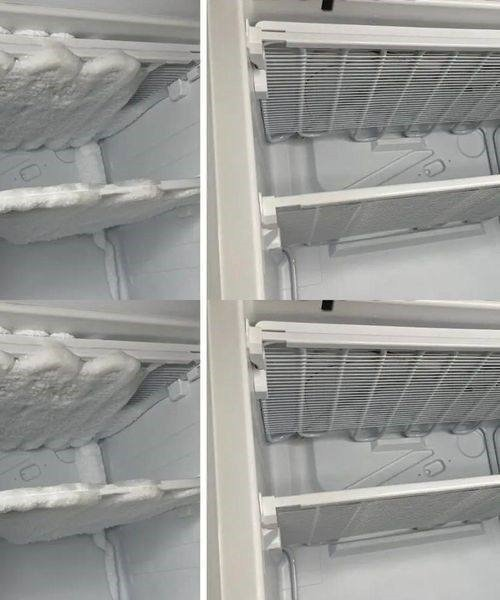ADVERTISEMENT
The refrigerator is a necessary appliance and certainly one of the most useful in the house. It keeps food fresh while storing it safely. However, this appliance, so precious nowadays, also experiences the phenomenon of frost that ends up forming on its inner walls, which makes it lose its efficiency. Fortunately, there are a few tricks to solve this problem quickly and easily.
Defrosting the freezer is not a pleasant task, but it is still essential to reduce food waste and help save energy. But still, despite this importance, this process is not always sufficient in absolute terms and this is where the solution we propose below comes into play.
How do you defrost a fridge or freezer covered in frost?
Is the frost coming back after defrosting a few days ago? It’s in a case like this that you can resort to an ingenious technique that will help you defrost your device more easily.
Thanks to this type of operation, you won’t need to defrost more than once or twice a year, whether you have an old or new model of fridge or freezer. And to do this, salt is the ingredient at the heart of this trick, which involves using it in the form of a salt solution to apply to the walls of the freezer.
To do this, first start by turning off your device. Next, add 2 tablespoons of salt to a bowl of hot water, pour the mixture into a spray bottle after completely dissolving the ingredient in the water, then spray the inside of your device. After a few minutes, the ice should melt. At the same time, use a wooden stick to remove the layer of frost.
If the inside of your device ever turns yellowish, you can use hydrogen peroxide to bleach it before rubbing it with a soft cloth soaked in glycerine. This will create a thin film that will help prevent the rapid formation of frost layers.
Other methods for defrosting the refrigerator and freezer
The following methods can defrost the refrigerator and speed up the process. You can also combine them if it suits you.
Defrosting the fridge with baking soda
If for some reason you don’t have salt, baking soda is still an alternative that works even if it doesn’t have the effectiveness of salt water. Either way, it helps prevent the formation of a layer of moisture that eventually freezes before turning into a layer of ice over time.
To apply, sprinkle a tablespoon of baking soda over the ice layers and then use a cloth soaked in warm water and talcum powder to scrub the ice.
Let the product sit for 20 minutes and then repeat the process again before breaking up the ice using a mixture of warm water and baking soda to help thaw. For stubborn ice, use a wooden or stiff plastic spatula to thaw manually but without exerting too much force. Then proceed with cleaning, taking care not to scratch surfaces. Rinse with a damp microfibre cloth and dry before switching the device back on.
Read more on next page
